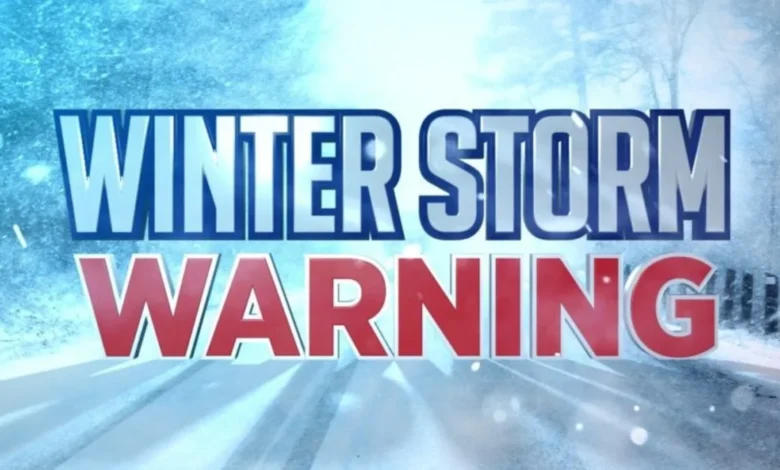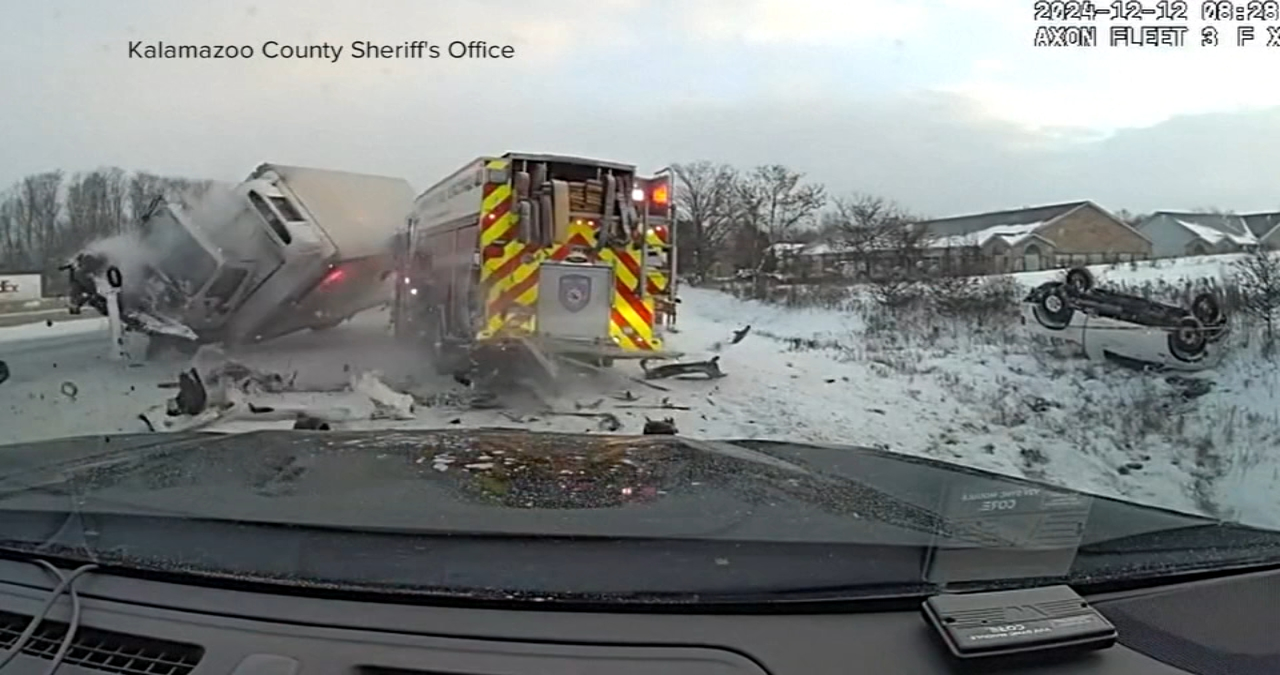Understanding Ice Storm Warnings: Essential Information to Stay Safe1

Ice Storm Warnings When winter rolls around, we start to brace ourselves for the usual snowstorms and freezing temperatures. But sometimes, the weather turns even more dangerous than we expect — it turns into an ice storm. An ice storm can be devastating, leaving damage in its wake, including downed trees, power outages, and hazardous travel conditions. But, before the storm hits, it’s crucial to understand what an ice storm warning is and how it can impact you and your family. This guide aims to provide a comprehensive explanation of ice storm warnings, their significance, and how you can prepare for one.
What is an Ice Storm Warning?
An ice storm warning is issued when weather conditions are expected to bring significant accumulations of ice over a specific region. These storms happen when rain or drizzle falls during freezing temperatures, causing ice to form on surfaces like roads, trees, and power lines. The buildup of ice can be hazardous and can lead to widespread disruptions.
Ice storm warnings are issued by the National Weather Service (NWS) or local meteorological authorities in regions where ice accumulation is expected to exceed a certain threshold, typically around a quarter of an inch. This threshold is critical because even a small amount of ice can create dangerous conditions, especially when it accumulates on trees and power lines. So, when you see an ice storm warning, it’s not just a heads-up about a little sleet or freezing rain; it’s a warning about potential widespread hazards that could last for hours or even days.
Why Are Ice Storm Warnings Important?
The importance of ice storm warnings cannot be overstated. Unlike snow, which can be more easily predicted and cleared, ice can create many different hazards. A small layer of ice can coat roadways, creating treacherous driving conditions. It can also cause power outages, as the weight of the ice can bring down power lines and tree branches. For people who depend on electricity for heating, a power outage can be more than just an inconvenience — it can be life-threatening.
Additionally, ice accumulation on tree branches can cause limbs to break, potentially damaging homes, vehicles, and anything else caught beneath them. Ice storms can also impair visibility, making it difficult for drivers and pedestrians to navigate safely. All of these dangers make it essential to be aware of the conditions that can lead to an ice storm warning.
How Ice Storms Form
Understanding how ice storms form helps you grasp the severity of the warning. Ice storms typically occur when warm air higher in the atmosphere creates rain, but the temperature near the surface is below freezing. This creates a situation where rain falls as liquid, but when it hits the cold ground, it freezes on contact. This phenomenon is known as freezing rain.
The conditions needed for an ice storm to develop are very specific. First, you need a warm layer of air between 1,500 and 3,000 feet above the surface. Below this layer, the air needs to be cold enough — usually 32°F (0°C) or below — to freeze the rain before it hits the ground. As the rain freezes, it builds up on surfaces, leading to the ice accumulation that can cause significant disruptions.
Factors That Influence the Severity of Ice Storms
Several factors determine how severe an ice storm will be. These include the thickness of the ice layer, the duration of the freezing rain, and the wind speed during the storm. For example, a prolonged period of freezing rain can lead to thicker ice accumulation, making conditions even more hazardous. Wind can also play a role; strong winds can cause ice-coated branches to break and power lines to snap, exacerbating the damage.
The region’s geography is another factor. In some areas, the ground may remain colder longer, allowing ice to accumulate more quickly. In other places, the ice may melt faster once the temperature rises, leading to less severe conditions.
Signs of an Impending Ice Storm
When preparing for an ice storm, it’s crucial to recognize the signs that one may be on the way. While weather forecasting has become more accurate in recent years, there are still telltale signs you can watch for when an ice storm is imminent. The most obvious is a significant drop in temperature, especially if it occurs after a period of warm weather. Freezing rain or sleet is another Ice Storm Warnings sign — if you see rain falling but it’s freezing upon contact with surfaces, the conditions are right for an ice storm.

How Meteorologists Predict Ice Storms
Meteorologists use a variety of tools to predict ice storms. One of the most essential tools is satellite imagery, which allows them to track cloud formation and movement. Weather radar is also crucial, helping meteorologists detect areas where precipitation is falling and whether it is in the form of snow, sleet, or freezing rain.
Meteorologists also rely on weather models that simulate atmospheric conditions to predict how storms will develop. These models take into account a range of factors, including temperature, humidity, wind, and pressure. By analyzing these variables, meteorologists can determine where an ice storm is most likely to occur and issue warnings accordingly.
How to Prepare for an Ice Storm
Preparation is key to surviving an ice storm safely. Here are several steps you can take to ensure you are ready when the storm hits.
Emergency Kit
Start by assembling an emergency kit that includes essentials like bottled water, non-perishable food, a flashlight, batteries, a first-aid kit, and any necessary medications. Since ice storms can knock out power for extended periods, having enough supplies to last at least 72 hours is critical. It’s also a good idea to have a battery-powered or hand-crank radio to stay updated on the latest weather information.
Keep Warm
If the power goes out, keeping warm will be a major priority. Dress in layers, use blankets, and, if possible, use a fireplace or wood stove for heat. If you have a portable generator, make sure to use it safely outdoors, away from windows, and never operate it inside your home to avoid carbon monoxide poisoning.
Prepare Your Home
Before the storm hits, inspect your home for any areas that might need attention. Trim any overhanging branches near your house or power lines, as these can easily become weighed down with ice and cause damage. Make sure your windows and doors are properly sealed to keep out drafts. If you have a garage, make sure it’s stocked with a snow shovel, salt, and other winter tools.
Safety Tips During an Ice Storm
Once the ice storm is underway, it’s critical to follow safety tips to minimize risk. If you don’t need to travel, stay indoors. Roads can become extremely dangerous, and accidents are more likely in icy conditions. If you must drive, make sure your car is winter-ready, with tires that have good traction and enough fuel to keep you warm if you get stuck.
Avoid Downed Power Lines
Power lines and trees can be dangerous in the aftermath of an ice storm. If you encounter a downed power line, stay far away. Even if the line appears to be dead, it could still be energized and pose a risk of electrocution. Report downed power lines to the authorities, and avoid touching anything they may have fallen on.
Stay Informed
Stay tuned to local news broadcasts or weather apps for updates on the ice storm. Weather conditions can change rapidly, and it’s important to be prepared for sudden shifts. If a power outage occurs, listen to battery-powered radios for emergency information. Avoid opening refrigerators or freezers unless necessary, as you want to conserve food.
Impact of Ice Storms on Infrastructure
Ice storms can have far-reaching impacts on infrastructure. Roads, power lines, and communication systems all suffer when ice accumulates. Since ice weighs down power lines, they can snap under the pressure, resulting in widespread power outages that can last days. In addition, ice buildup on roads can lead to accidents and make driving extremely dangerous.
Power Outages
Power outages are one of the most significant issues caused by ice storms. When ice accumulates on power lines, the weight can cause them to sag and break. Trees that are coated in ice are also at risk of falling onto power lines, adding to the disruptions. For people in rural areas or regions with limited infrastructure, power restoration can take days or even longer.
To prepare for power outages, make sure you have backup power options, like a generator or an alternative heat source. If you do use a generator, follow safety protocols to avoid carbon monoxide poisoning and ensure it’s properly ventilated.
After the Ice Storm: What to Expect
Once the ice storm has passed, it’s time to assess the damage and ensure that you and your loved ones are safe. In some cases, roads will be impassable due to fallen trees and ice-covered surfaces. If you must venture outside, be extremely cautious, as sidewalks, driveways, and roads may remain slippery for some time.
Cleaning Up After an Ice Storm
After the storm has passed, cleanup can begin, but it’s important to approach it with caution. If branches are down, avoid touching power lines and call in professionals for assistance. If there are trees that are partially leaning, it’s important to have them checked by a certified arborist to ensure they won’t fall.
Conclusion
An ice storm warning is a signal to take immediate action to protect yourself and your property. Understanding what an ice storm is, how it forms, and how to prepare for it can make all the difference in staying safe during these hazardous weather events. By staying informed, preparing in advance, and following safety protocols, you can weather the storm and minimize the risks associated with these dangerous phenomena. Remember, ice storms may seem like just another winter event, but their impact can be severe, so always be ready to act quickly when a warning is issued. Stay safe out there!






